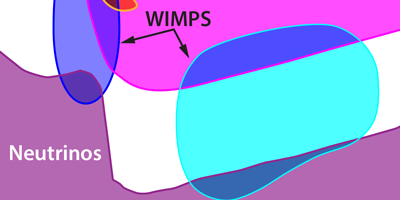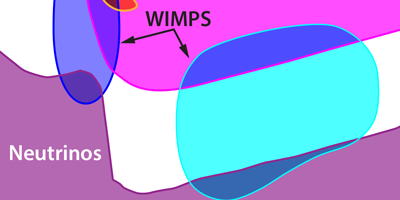Discriminating Dark Matter from Neutrinos
Several experiments across the globe are poised to detect the possible sign of a dark matter particle colliding with a nucleus. These dark matter searches can also potentially record collisions of neutrinos from the Sun and other astrophysical sources. This neutrino background could become a confounding factor in next-generation dark matter experiments. But a new theoretical analysis by Julien Billard of the Massachusetts Institute of Technology, Cambridge, and his colleagues suggests how to discriminate signals from neutrinos and dark matter by using multiple types of detector materials.
The currently favored candidate for dark matter, predicted by certain particle physics models, is a weakly interacting massive particle (WIMP). The WIMP’s mass is unknown, but it’s expected to lie between and proton masses. Direct dark matter searches use detectors that are sensitive to the recoil of a single nucleus from a collision with a WIMP.
However, as these searches become more and more sensitive, they will eventually be able to detect nuclear recoils caused by neutrinos coming from the Sun, distant supernovae, and cosmic-ray interactions in the atmosphere. In a previous study, the same authors showed that these neutrino events can mimic a dark matter signal, making it harder to probe the existence of WIMPs in low-mass ranges. However, the authors now point out several ways to separate out the neutrino background. In particular, WIMP interactions can depend on spin, whereas neutrino interactions do not, so comparing detectors with different materials (i.e., with different nuclear spins) can improve the overall sensitivity to pure dark matter signals, in some cases by a factor of , making detection possible in spite of the neutrino background.
This research is published in Physical Review D.
–Michael Schirber





